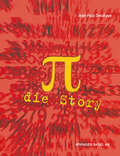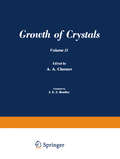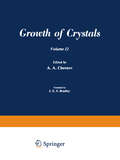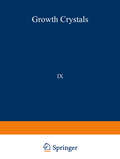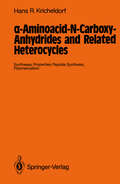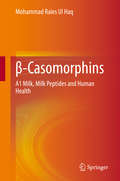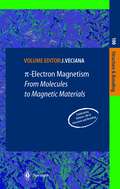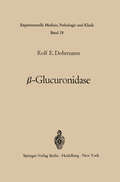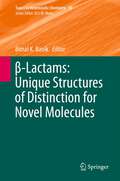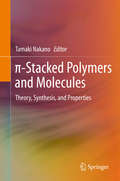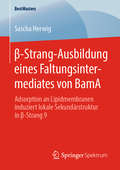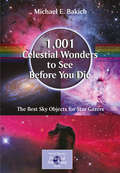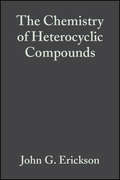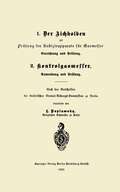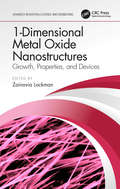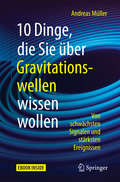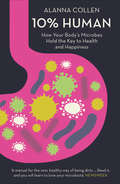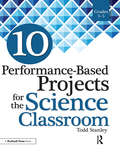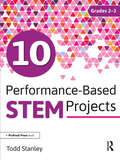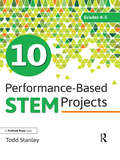- Table View
- List View
القانون في الطب 2
by ابن سينااعلم أن المرارة كيس معلّق من الكبد إلى ناحية المعدة من طبقة واحدة عصبانية ولها ضمّ إلى الكبد ومجرى فيه يجذب الخلط الرقيق الموافق لها والمرار الأصفر ويتصل هذا المجرى بنفس الكبد والعروق التي فيها يتكون الدم وله هناك شعب كثيرة غائصة وإن كان مدخل عمودها من التقعير والفم ومجرى إلى ناحية المعدة. والأمعاء ترسل فيه إلى ناحيتهما فضل الصفراء على ما ذكرناه في الكتاب الأول. وهذا المجرى يتصل أكثر شعبه بالاثني عشري وربما اتصل شيء صغير منه بأسفل المعدة وربما وقع الأمر بالضد فصار الأكبر المتصل بالوعاء الأغلظ إلى أسفل المعدة والأصغر إلى الاثني عشري. وفي أكثر الناس هو مجرى واحد متصل بالاثني عشري. وأما مدخل الأنبوبة المصاصة للمرارة في المرارة فقريب من مدخل أنبوبة المثانة في المثانة. ومن عادة الأطباء الأقدمين أن يسموا المرار الكيس الأصغر كما أنه من عادتهم أن يسموا المثانة الكيس الأكبر ومن المنافع في خلقة المرارة تنقية الكبد من الفضل الرغوي وأيضاً تسخينها كالوقود تحت القدر وأيضاً تلطيف الدم وتحليل الفضول وأيضاً تحريك البراز وتنظيف الأمعاء وشدّ ما يسترخي من العضل حوله وإنما لم يخلق في الأكثر للمرارة سبيل إلى المعدة لتغسل رطوباتها بالمرة كما تغسل بها في رطوبات الأمعاء لأن المعدة تتأذى بذلك وتغثّي ويفسد الهضم فيها بما يخالط الغذاء من خلط رديء ويأتيها من العرق الضارب. وللعصبة التي تتصل بالكبد شعبتان صغيرتان جداً والمرارة كالمثانة طبقة واحدة مؤلفة من أصناف الليف الثلاثة وإذا لم تجذب المرارة المرار أو جذبت فلم تستنق عنه حدثت آفات فإن الصفراء إذا احتبست فوق المرارة أو رمت الكبد وأورثت اليرقان وربما عفنت وأحدثت حميات رديئة. وإذا سالت إلى أعضاء البول بإفراط قرحت وإذا سالت إلى عضو ما أحدثت الحمرة والنملة وإذا دبت في البدن كله ساكنة غير هائجة أحدثت اليرقان وإذا سالت عن المرارة إلى الأمعاء بإفراط أورثت الإسهال المراري والسحج.
π — Die Story: Aus dem Französischen von Manfred Stern
by Jean-Paul Delahaye"Die Zahl1t zu erforschen bedeutet, das Universum zu erforschen ... » David Chudnovsky " ... oder eher die Tiefen des Meeres auszuloten, denn wir befinden uns unter Wasser, und alles scheint ohne Form zu sein. Wir brauchen eine Lampe, und unser Computer ist diese Lampe.» Gregory Chudnovsky 11: = 3,14159 26535 89793 23846 26433 83279 ... Die Zahl 1t steht im Mittelpunkt eines außergewöhnlich großen Bereiches der Mathematik. Dieser Bereich ist so groß, daß niemand ihn jemals vollständig erforschen wird. Dieses Buch streift im Zeitraffer durch die Geschichte der Zahl 1t und zeigt Ihnen auf unterhaltsame Weise, daß die Mathematiker - nach 4000 Jahren Arbeit und vielen wunderbaren Entdeckungen - immer noch neue Eigenschaften von 1t finden. Ungeachtet des bisher angehäuften Wissens bleibt diese funken sprühende Zahl geheimnisvoll, und manche der elementaren Fragen über rr scheinen sogar jenseits der Reichweite der heutigen Mathematik zu sein. Um die Zahl 1t gruppieren sich viele Teilgebiete der Mathematik, denen Sie hier begegnen. Hierzu gehören: - die Geometrie, denn wir dürfen niemals vergessen, daß 1t seinen Ursprung in den Überlegungen der antiken Geometer hatte. Auch heute noch haben wir unsere Freude an den scharfsinnigen Konstruktionen mit Zirkel und Lineal, die Generationen von Mathematikern mit Besessenheit erfüllt haben.
Рост Кристаллоь / Rost Kristallov / Growth of Crystals: Volume 11
by A. A. ChernovThe Growth of Crystals series was begun in 1957 by A. V. Shubnikov and . N. N. SheftaP with the publication of the first volume. which contained the proceedings of the First All-Union Conference on Crystal Growth. The initiative and considerable efforts of the principal editor of the entire series. N. N. Sheftal', and his assistants led over the next 15 years to the publica tion of ten volumes which have assumed a leading position among the numerous books on crys tal growth. It has become traditional in this series to adopt a broad approach to crystal growth problems, and this approach is continued in Volumes 11 and 12, which are composed mainly of papers presented at the Fourth All-Union Conference on Crystal Growth in Tsakhkadzor. September 17-22, 1972. These papers, presented by both Soviet and foreign workers, deal with crystal growth processes. growth methods. and crystal perfection. Many of the papers reflect the tendency for our knowledge of crystallization processes to become increasingly more fundamental. with emphaSis on quantitative treatments. There are some extremely difficult problems in this approach. especially when the requirements of practical uses are envisaged. and many of these are discussed in various ways in these two volumes. These topics include detailed theoretical and experimental analysis of cooperative phenomena in crystallization. with emphasis not only on statistical thermodynamics but also statistical kinetics. This approach involves research on the structure and properties of phase boundaries. including the composition and structure of surface layers in liquids.
Рост Кристаллоь / Rost Kristallov / Growth of Crystals: Volume 12
by A. A. ChernovVolumes 11 and 12 contain the papers read at the Fourth All-Union Conference on Crystal Growth in Tsakhkadzor, September 17-22, 1972; this volume contains papers on crystal growth from melts, from low-temperature solutions, hydrothermal solutions, and hot solutions, and also from the gas state, including processes involving reactions. In addition, there are papers on crystal perfection in relation to conditions of formation and the effects of electric and mag netic fields on crystallization. These papers reflect researches directed to the development and industrial production of perfect crystals required for advanced techniques in solid-state physics and chemistry, as well as for other purposes such as novel materials. There are many different scientific and technical problems in producing large perfect single crystals, and advances in this area made in the USSR and elsewhere are reflected in the papers in both volumes. On the one hand, any particular defective structure in a crystal originates from some mechanism and growth conditions; in particular, inclusions are trapped on account of the physicochemical parameters of the melt, the surface processes, and the sta bility of the growth front under particular crystallization conditions. Further, impurity trap ping is decisively influenced by the surface kinetics, growth-front stability, composition and structure of the boundary layer, any complexes present in the liquid, and (of course) the crys tallochemical relationships between the impurity and the crystal.
РОСТ КРИСТАЛЛОВ/Rost Kristallov/Growth of Crystals: Volume 9
by N. N. Sheftal' E. I. GivargizovFor 50 years the Fedorov Institute of Crystallography, Mineralogy, and Petrography at Leningrad Mining Institute has held annual memorial meetings for E. S. Fedorov. Immediate ly after the jubilee meeting (May 21-24, 1969), the Fedorov All-Union Symposium on Crystal Growth was held, and the proceedings of that symposium constitute Volume 9 of Growth of Crystals. The symposium surveyed the advances made in the USSR in those aspects of growth con cerned mainly with morphology and structure in natural crystals or closely related artificial ones, work which confirmed their relation to E. S. Fedorov and to mineralogical crystallogra phy. Crystallography is one of the older branches of natural science but has recently under gone a striking rejuvenation on account of new methods and new concepts. Photogoniometric methods have been developed in goniometry, while crystal optics has found new lines of ad vance in electrooptics and techniques in the ultraviolet and far infrared regions. Morphologic studies now use a vast range of techniques, from the hand lens to the electron microscope or cinemicrography. X-ray analysis is steadily becoming more automatic, and fast computers are used with accelerated methods of structure interpretation. Crystal growth is one of the younger divisions of crystallography; previously t it had been of interest only in experimental mineralogy, but now it is an important branch of science and technology with close relations to industry.
α-Aminoacid-N-Carboxy-Anhydrides and Related Heterocycles: Syntheses, Properties, Peptide Synthesis, Polymerization
by Hans R. Kricheldorfβ-Casomorphins: A1 Milk, Milk Peptides and Human Health
by Mohammad Raies Ul HaqThis book compiles the latest research on the A1 and A2 forms of cow milk, and attempts to show a correlation between the type of cow milk consumption and reported incidence of certain diseases (type 1 diabetes mellitus, cardiovascular diseases, sudden infant death syndrome and neurological disorders). Cow milk generally contains two types of β-casein, A1 or A2. The book describes the A1/A2 hypothesis, its foundation and the genetics behind it. It discusses the two forms of milk and why one is considered more harmful than the other. Seeking to provide a balanced view of the milk types, the book’s initial chapters highlight the structure, function and physiological activity of β-casomorphins. Subsequent sections describe the health concerns associated with A1 milk, and the various case studies and research surrounding it. In turn, the arguments against the hypothesis put forward by EFSA, American Nutritionists and Truswell are also highlighted. The book does not make any recommendations for dairy consumers; rather, it is a collection of essential data both in favour and against the hypothesis. Further mechanistic studies involving well-designed animal and human trials at the cellular, molecular, biochemical and immunological levels will be needed in order to draw sound conclusions. Overall, the hypothesis is fascinating, and possibly significant. However, verified and authenticated research with reproducible results is needed to make final consumer recommendations. This timely book offers a valuable resource for researchers and students of dairy science, as well as industry experts.
π-Electron Magnetism: From Molecules to Magnetic Materials (Structure and Bonding #100)
by D. Arcon M. Deumal K. Inoue M. Kinoshita J. J. Novoa F. Palacio K. Prassides J. M. Rawson C. RoviraCelebrating Volume 100: Thirty years ago Springer-Verlag together with a distinguished Board of Editors started the series Structure and Bonding. Initially the series was set up to publish reviews from different fields of modern inorganic chemistry, chemical physics and biochemistry, where the general subject of chemical bonding involves a metal and a small number of associated atoms. Three years ago the aims of the series was refined to span the entire periodic table and address structure and bonding issues wherever they may be relevant. Not only the traditional areas of chemical bonding will be dealt with but also nanostructres, molecular electronics, supramolecular structure, surfaces and clusters. With these aims in mind it is noteworthy that Volume 100 effectively reinforces and illustrates these ideals and is titled Pi-Electron Magnetism from Molecules to Magnetic Materials.
β-Lactams: Unique Structures of Distinction for Novel Molecules (Topics in Heterocyclic Chemistry #30)
by Bimal K. BanikI. Ojima • E. S. Zuniga • J. D. Seitz: Advances in the Use of Enantiopure β-Lactams for the Synthesis of Biologically Active Compounds of Medicinal Interests.- I. Fernández • Miguel A. Sierra: β -Lactams from Fischer Carbene Complexes: Scope, Limitations, and Reaction Mechanism.- Bablee Mandal • Basudeb Basu: Synthesis of β-Lactams Through Alkyne–Nitrone Cycloadditions.- T. T. Tidwell: Preparation of Bis-β-Lactams by Ketene–Imine Cycloadditions.- Edward Turos: The Chemistry and Biology of N-Thiolated β-Lactams.- Indrani Banik • Bimal K. Banik: Synthesis of β-Lactams and Their Chemical Manipulations Via Microwave-Induced Reactions.
π-Stacked Polymers and Molecules: Theory, Synthesis, and Properties
by Tamaki NakanoThis book covers broad aspects of the chemistry of π-stacked polymers and low-molecular-weight molecules, from synthesis through theory. It is intended for graduate students and researchers in academia and industry and consists of chapters written by renowned scientists who have made significant contributions to this field in the past decade. π-Stacked polymers and low-molecular-weight molecules are expected to replace main-chain conjugated polymers such as polyacetylenes and polythiophenes as organic conducting and energy-transferring substances that are important as materials for photo-electronic applications. π-Stacked polymers and molecules have significant advantages over main-chain conjugated polymers, i.e., high solubility in solvents, large freedom in molecular design, and colorless nature.
β-Strang-Ausbildung eines Faltungsintermediates von BamA: Adsorption an Lipidmembranen induziert lokale Sekundärstruktur in β-Strang 9 (BestMasters)
by Sascha HerwigSascha Herwig beschreibt die Faltung und den Einbau von β-Fass-Membranproteinen am Modell des essenziellen BamA aus Außenmembranen von Escherichia coli, der zentralen Untereinheit des β-Barrel-Assembly-Machinery-Komplexes. Membranproteine des β-Fass-Typs der Außenmembranen von Bakterien oder Zellorganellen werden über diesen Komplex eingebaut. Mit ortsgerichteter Fluoreszenzspektroskopie des β-Strangs 9 der insgesamt 16 β-Stränge umfassenden BamA-Membrandomäne wird in Modellmembranen nachgewiesen, dass der Strang in einem Faltungsintermediat bereits in adsorbierter Form parallel zur Membranoberfläche entsteht.
1,001 Celestial Wonders to See Before You Die: The Best Sky Objects for Star Gazers (The Patrick Moore Practical Astronomy Series)
by Michael E. Bakich1,001 Celestial Wonders is a guide to the night sky's brightest and most fascinating objects. Each target is accessible to amateur astronomers using medium-sized telescopes from a dark site. In fact, many are so bright they remain visible under moderate light pollution, as from the outskirts of a city or the suburbs of a town. The book provides a chronological target list, making it easy to use. No matter what night you choose, this book will show you many of the most memorable objects to observe, whether you are using a small telescope or even binoculars, or an instrument of larger aperture. This is far more than just a list of interesting objects. It is structured so that objects of various observing difficulty are included, which will help readers become better observers, both encouraging beginners and challenging long-time amateur astronomers. This book is designed to be easy-to-use at the telescope, and observers will appreciate each object's standardized layout and the book's chronological organization. Finally, many amateur astronomers function best when presented with a list! Even the Meade Autostar® controller features a 'best tonight' list (although the list is far less comprehensive and detailed than the catalog provided in this book), a feature that has proved extremely popular. 1,001 Celestial Wonders offers a life-list of objects any observer would be proud to complete.
The 1,2,3- and 1,2,4-Triazines, Tetrazines and Pentazines (Chemistry of Heterocyclic Compounds: A Series Of Monographs #20)
by John G. Erickson Paul F. Wiley V. P. WystrachThe Chemistry of Heterocyclic Compounds, since its inception, has been recognized as a cornerstone of heterocyclic chemistry. Each volume attempts to discuss all aspects – properties, synthesis, reactions, physiological and industrial significance – of a specific ring system. To keep the series up-to-date, supplementary volumes covering the recent literature on each individual ring system have been published. Many ring systems (such as pyridines and oxazoles) are treated in distinct books, each consisting of separate volumes or parts dealing with different individual topics. With all authors are recognized authorities, the Chemistry of Heterocyclic Chemistry is considered worldwide as the indispensable resource for organic, bioorganic, and medicinal chemists.
1. Der Aichkolben zur Prüfung der Kubizirapparate für Gasmesser. Einrichtung und Prüfung. 2. Kontrolgasmesser. Anwendung und Prüfung
by L. Poplawsky1-Dimensional Metal Oxide Nanostructures: Growth, Properties, and Devices (Advances in Materials Science and Engineering)
by Zainovia Lockman1-D metal oxide nanostructures, especially those with semiconducting properties, have attracted much attention in recent years due to their potential and emerging applications, specifically in environment purification and energy devices. For these applications, there have been many efforts to grow 1-D nanostructures in the form of nanotubes, nanorods, and nanowires using processes that conserve energy, are cost effective, and can be scaled up for large-scale production. 1-Dimensional Metal Oxide Nanostructures gathers under one title the most recent development of oxide nanomaterials, especially those fabricated via oxidation process in the nanoscale field. Thermal and anodic oxidation processes are reviewed with an aim to offer an in-depth understanding of mechanisms of 1-D nanostructure formation, their characteristics, and limitations. Other more common methods are also discussed, including sol-gel, hydrothermal, and other templated methods. Important applications of 1-D nanostructures are then presented, focusing on oxides like zinc oxide, titanium oxide, zirconium oxide, copper oxide, and iron oxide. A chapter on carbon nanotubes hybrid with these oxides is also included as well as one on silicon oxide nanowires formation by local anodic oxidation process. Aimed at researchers, academics, and engineers working across the fields of nanotechnology, materials science, chemistry, physics, semiconductors, and environmental and biomedical engineering, this essential reference enables readers to grasp the main concepts of nanomaterials in 1-D: formation technique, characteristics, and uses. It also encourages practical innovations in nanotechnology, especially in curbing pressing global issues related to energy, environment, and security.
1-Dimensional Metal Oxide Nanostructures: Growth, Properties, and Devices (Advances in Materials Science and Engineering)
by Zainovia Lockman1-D metal oxide nanostructures, especially those with semiconducting properties, have attracted much attention in recent years due to their potential and emerging applications, specifically in environment purification and energy devices. For these applications, there have been many efforts to grow 1-D nanostructures in the form of nanotubes, nanorods, and nanowires using processes that conserve energy, are cost effective, and can be scaled up for large-scale production. 1-Dimensional Metal Oxide Nanostructures gathers under one title the most recent development of oxide nanomaterials, especially those fabricated via oxidation process in the nanoscale field. Thermal and anodic oxidation processes are reviewed with an aim to offer an in-depth understanding of mechanisms of 1-D nanostructure formation, their characteristics, and limitations. Other more common methods are also discussed, including sol-gel, hydrothermal, and other templated methods. Important applications of 1-D nanostructures are then presented, focusing on oxides like zinc oxide, titanium oxide, zirconium oxide, copper oxide, and iron oxide. A chapter on carbon nanotubes hybrid with these oxides is also included as well as one on silicon oxide nanowires formation by local anodic oxidation process. Aimed at researchers, academics, and engineers working across the fields of nanotechnology, materials science, chemistry, physics, semiconductors, and environmental and biomedical engineering, this essential reference enables readers to grasp the main concepts of nanomaterials in 1-D: formation technique, characteristics, and uses. It also encourages practical innovations in nanotechnology, especially in curbing pressing global issues related to energy, environment, and security.
10 Dinge, die Sie über Gravitationswellen wissen wollen: Von schwächsten Signalen und stärksten Ereignissen
by Andreas MüllerDieses Buch nimmt Sie mit zur Wissenschaftssensation des Jahres 2016: Im Februar gaben Forscher bekannt, dass es mit den LIGO-Detektoren gelungen war, Gravitationswellen erstmals direkt nachzuweisen – 100 Jahre nach ihrer Vorhersage durch Albert Einstein. Der Autor beantwortet allgemein verständlich die zehn spannendsten Fragen zu diesen Beben der Raumzeit, die bei den mächtigsten Ereignissen entstehen, die es in unserem Universum geben kann, beispielsweise beim Urknall selbst, bei der Verschmelzung Schwarzer Löcher, bei der Explosion superschwerer Sterne und bei der Kollision von Neutronensternen:Wie wirken Gravitationswellen auf mich und Materie?Wie misst man Gravitationswellen, und warum ist das so schwierig?Welche kosmischen Quellen geben Gravitationswellen ab?Warum will man Gravitationswellen überhaupt messen?Was wird man Neues mit Gravitationswellen entdecken können?Und mehr! In kurzen Interviews kommen zusätzlich Experten aus der Gravitationswellenforschung zu Wort und geben einen aktuellen Einblick in ihr jeweiliges Forschungsgebiet und ihren Beitrag zur Entdeckung von Gravitationswellen. Dabei legen die Wissenschaftler eindrucksvoll dar, wie sich ihre persönliche Sicht des Universums mit der Entdeckung des Gravitationswellensignals, das zwei verschmelzende Schwarze Löcher zeigt, verändert hat.
10% Human: How Your Body's Microbes Hold The Key To Health And Happiness
by Alanna CollenObesity, autism, mental health problems, IBS, allergies, auto-immunity, cancer. Does the answer to the modern epidemic of ‘Western’ diseases lie in our gut?
10 Performance-Based Projects for the Science Classroom: Grades 3-5
by Todd StanleyEach book in the 10 Performance-Based Projects series provides 10 ready-made projects designed to help students achieve higher levels of thinking and develop 21st-century skills. Projects are aligned to the Next Generation Science Standards, allowing students to explore and be creative as well as gain enduring understanding. Each project represents a type of performance assessment, including portfolios, oral presentations, research papers, and exhibitions. Included for each project is a suggested calendar to allow teacher scheduling, mini-lessons that allow students to build capacity and gain understanding, as well as multiple rubrics to objectively assess student performance. The lessons are presented in an easy-to-follow format, enabling teachers to implement projects immediately. Grades 3-5
10 Performance-Based Projects for the Science Classroom: Grades 3-5
by Todd StanleyEach book in the 10 Performance-Based Projects series provides 10 ready-made projects designed to help students achieve higher levels of thinking and develop 21st-century skills. Projects are aligned to the Next Generation Science Standards, allowing students to explore and be creative as well as gain enduring understanding. Each project represents a type of performance assessment, including portfolios, oral presentations, research papers, and exhibitions. Included for each project is a suggested calendar to allow teacher scheduling, mini-lessons that allow students to build capacity and gain understanding, as well as multiple rubrics to objectively assess student performance. The lessons are presented in an easy-to-follow format, enabling teachers to implement projects immediately. Grades 3-5
10 Performance-Based STEM Projects for Grades 2-3
by Todd Stanley10 Performance-Based STEM Projects for Grades 2-3 provides 10 ready-made projects designed to help students achieve higher levels of thinking and develop 21st-century skills while learning about science, technology, engineering, and math. Projects are aligned to national standards and feature crosscurricular connections, allowing students to explore and be creative as well as gain an enduring understanding. Each project is linked to national STEM education goals and represents one of a variety of performance assessments, including oral presentations, research papers, and exhibitions. Included for each project are a suggested calendar to allow teachers to easily plan a schedule, mini-lessons that allow students to build capacity and gain an understanding of what they are doing, as well as multiple rubrics that can be used to objectively assess the performance of students. The lessons are laid out in an easy-to-follow format that will allow teachers to implement the projects immediately. Grades 2-3
10 Performance-Based STEM Projects for Grades 2-3
by Todd Stanley10 Performance-Based STEM Projects for Grades 2-3 provides 10 ready-made projects designed to help students achieve higher levels of thinking and develop 21st-century skills while learning about science, technology, engineering, and math. Projects are aligned to national standards and feature crosscurricular connections, allowing students to explore and be creative as well as gain an enduring understanding. Each project is linked to national STEM education goals and represents one of a variety of performance assessments, including oral presentations, research papers, and exhibitions. Included for each project are a suggested calendar to allow teachers to easily plan a schedule, mini-lessons that allow students to build capacity and gain an understanding of what they are doing, as well as multiple rubrics that can be used to objectively assess the performance of students. The lessons are laid out in an easy-to-follow format that will allow teachers to implement the projects immediately. Grades 2-3
10 Performance-Based STEM Projects for Grades 4-5
by Todd Stanley10 Performance-Based STEM Projects for Grades 4-5 provides 10 ready-made projects designed to help students achieve higher levels of thinking and develop 21st-century skills while learning about science, technology, engineering, and math. Projects are aligned to national standards and feature crosscurricular connections, allowing students to explore and be creative as well as gain an enduring understanding. Each project is linked to national STEM education goals and represents one of a variety of performance assessments, including oral presentations, research papers, and exhibitions. Included for each project are a suggested calendar to allow teachers to easily plan a schedule, mini-lessons that allow students to build capacity and gain an understanding of what they are doing, as well as multiple rubrics that can be used to objectively assess the performance of students. The lessons are laid out in an easy-to-follow format that will allow teachers to implement the projects immediately. Grades 4-5
10 Performance-Based STEM Projects for Grades 4-5
by Todd Stanley10 Performance-Based STEM Projects for Grades 4-5 provides 10 ready-made projects designed to help students achieve higher levels of thinking and develop 21st-century skills while learning about science, technology, engineering, and math. Projects are aligned to national standards and feature crosscurricular connections, allowing students to explore and be creative as well as gain an enduring understanding. Each project is linked to national STEM education goals and represents one of a variety of performance assessments, including oral presentations, research papers, and exhibitions. Included for each project are a suggested calendar to allow teachers to easily plan a schedule, mini-lessons that allow students to build capacity and gain an understanding of what they are doing, as well as multiple rubrics that can be used to objectively assess the performance of students. The lessons are laid out in an easy-to-follow format that will allow teachers to implement the projects immediately. Grades 4-5

